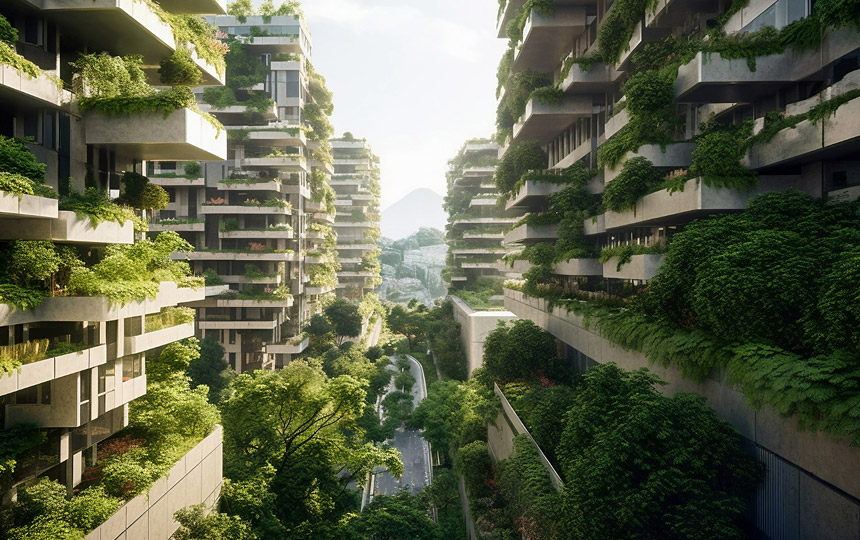El término arquitectura regenerativa fue acuñado por William McDonough y Michael Braungart en su libro Cradle to Cradle: Remaking the Way We Make Things, publicado en 2002, hasta ahora el mayor exponente de la economía circular aplicada a la arquitectura.
La arquitectura regenerativa va más allá de la mera sostenibilidad; busca una simbiosis con la naturaleza en lugar de explotarla. Su enfoque no se limita a minimizar el impacto ambiental, como ocurre con la arquitectura sostenible, sino que aspira a construir edificaciones autosuficientes y en armonía con el entorno.
La diferencia fundamental entre ambas radica en sus objetivos. Mientras que la arquitectura sostenible se centra en reducir el impacto ambiental de las construcciones, especialmente en términos de eficiencia energética, la arquitectura regenerativa va más allá. Busca integrar la vida cotidiana de las personas con la naturaleza, reconociendo a esta última como un socio esencial en el diseño y funcionamiento de los espacios habitables.
En este sentido, las edificaciones regenerativas se conciben no solo como estructuras físicas, sino como ecosistemas en sí mismas. Se diseñan teniendo en cuenta la interacción dinámica entre el ser humano y su entorno natural, con el objetivo de satisfacer las necesidades humanas mientras se promueve la salud y la vitalidad de los ecosistemas circundantes.
“Los edificios deben funcionar como árboles y las ciudades como bosques”. William McDonough
Fuente: RED 2030
https://red2030.com/arquitectura-regenerativa-el-camino-hacia-un-futuro-habitable/









